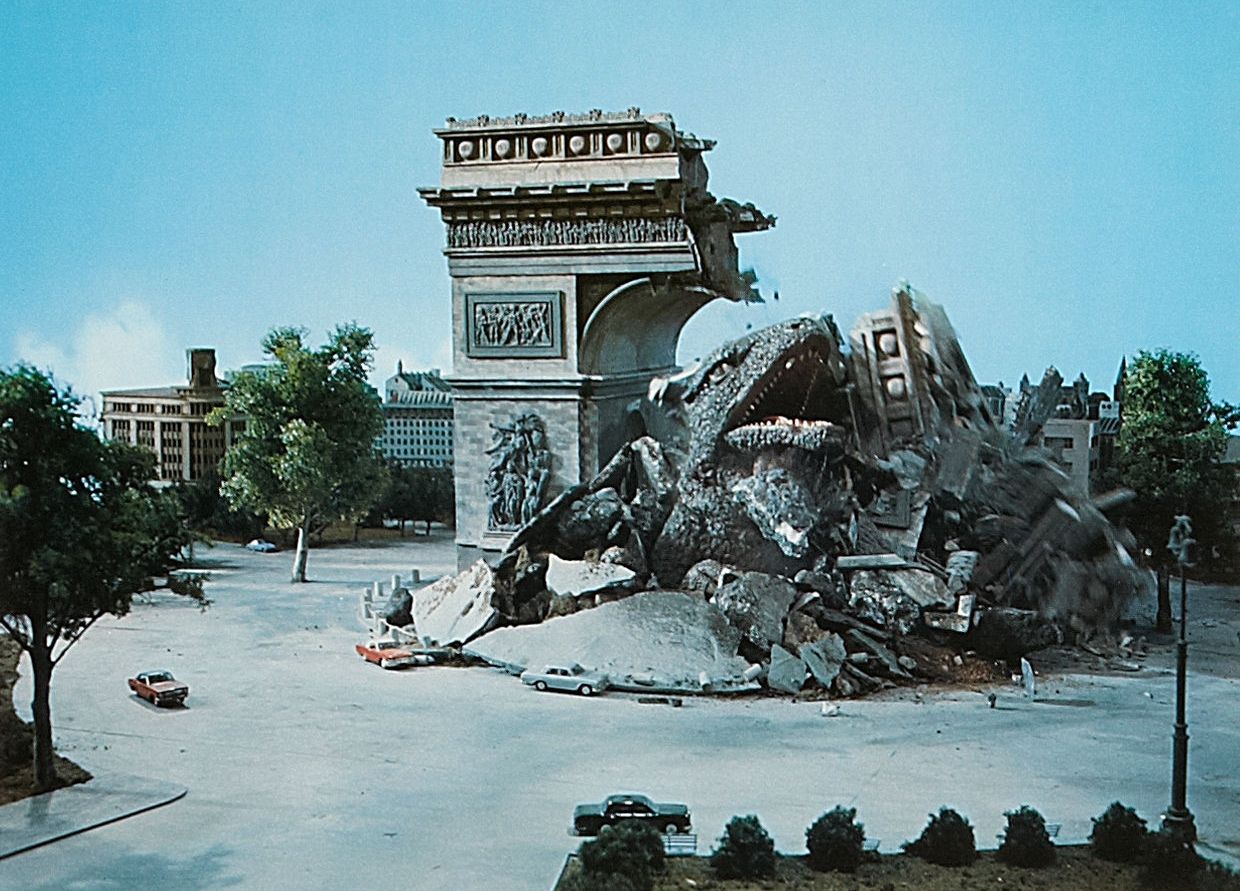
The Japanese term (dai)kaiju refers to a film genre that features giant monsters, usually attacking humanity or fighting other similar creatures. Toho’s Godzilla (the Japanese title is actually Godzira) is the most renowned character of the genre, with other famous entries including Tsuburaya Productions’ Ultraman and Daiei Film’s Gamera. All of the above characters spawned a number of films with the latest Godzilla film titled “Godzilla Resurgence”, scheduled to premiere on July 2016.
Drawing from themes like the atomic bomb and the animosity between Japan and the United States or Russia, these films dominated the box office for more than four decades, starting in the 50s and generating tons of movies that occasionally paired monsters from different franchises.
At the time, they were very commercially successful. However, in the last few decades, most of them (particularly the older ones) are considered cult films, due to their preposterous plots and the sometimes-failing special effects, which used manufactured miniatures and actors in rubber costumes.
With a focus on diversity, and in an effort to include as many of these “monsters” as possible, here is a list with 15 of the best of them, in chronological order.
1. Godzilla (Ishiro Honda, 1954)
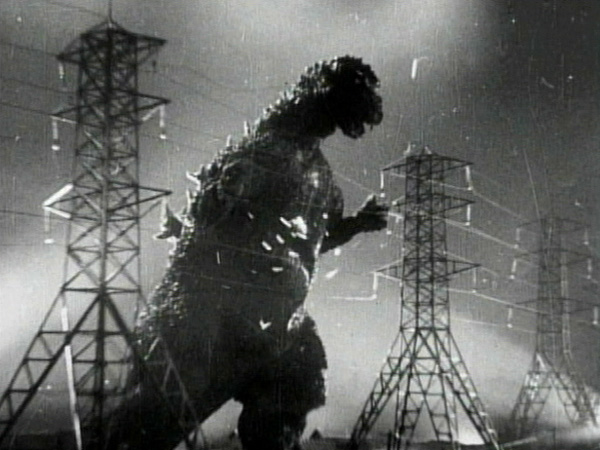
The first appearance of the 400-foot dinosaur with the distinct Tyrannosaurus Rex features and characteristics came in this particular film.
Godzilla is awakened by the explosion of an atomic bomb, and emerges from the sea to wreak havoc, initially on a few fishing villages and then to Tokyo. The monster seems to be drawn in by electricity, and is not particularly interested in humans, who are killed in scores as Godzilla passes through the city. The army seems unable to face the kaiju and the only hope lies with an invention from a scientist, a weapon that can suck oxygen from water.
The film had a huge impact on Japanese audiences, who were largely intrigued by both the evident exploitation of recent memories of the A-bomb, and the concept of kaiju, which was unprecedented in Japan. The film entailed great special effects by Eiji Tsuburaya, who created magnificent destruction scenes using manufactured models instead of computer graphics, and an all-star cast headed by Takashi Shimura.
Furthermore, the concept of the scientist who sacrifices himself found great appeal with the Japanese, with the concept of Kamikaze in World War II being equally recent with that of the bomb.
Despite the fears of the production company for screening a Japanese film so close to the war, “Godzilla” was also a box office hit in the United States. The US version was somewhat different, having added scenes with an American reporter named Steve Martin, which were not included in the original, and different sound and dubbing techniques.
2. Rodan (Ishiro Honda, 1956)
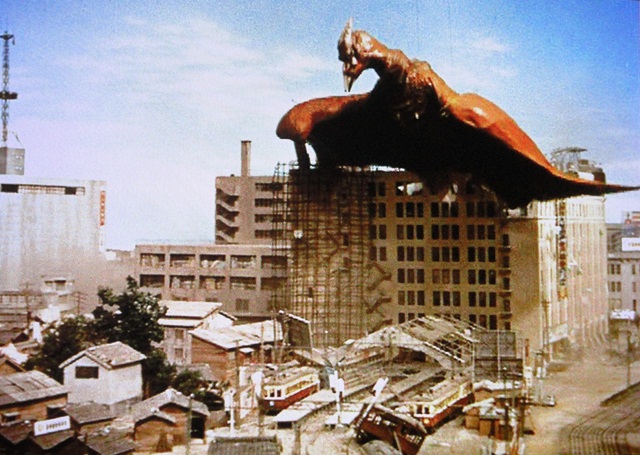
Toho brought back all of the original “Godzilla” team members for this film, which was the first kaiju picture shot in color and the first monster not played by an actor in a suit.
Strange deaths occur in a mining village and when Shigeru and a group of miners investigate a cave, they discover a huge insect called Meganulon, which attacks them. Shigeru manages to escape and informs the police. However, they discover their guns have no effect on the creature and they are barely saved by a cave-in.
Soon after, a supersonic creature starts to attack jets, only to be revealed as Rodan, a pterodactyl who wants to reunite with his mate, who is guarding eggs inside the Aso volcano. In his path, he wreaks havoc all over Tokyo.
Kenji Sahara is very good as Shigeru, in one of the most developed characters ever to appear in a kaiju film. Rodan and the Meganulon look very impressive and sinister, and the miniatures are extremely well built. Furthermore, Honda managed to retain a serious tone throughout the film, avoiding the slapstick elements that were implemented in future Rodan films.
3. Varan The Unbelievable (Ishiro Honda, 1958)
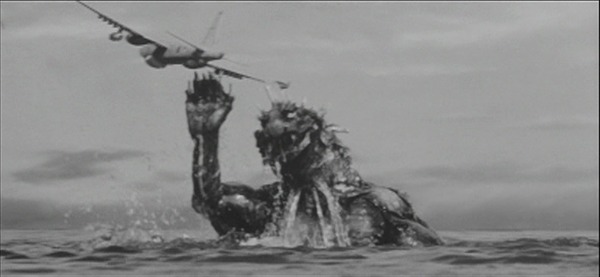
Toho’s last kaiju film shot in black and white featured a creature that resembled Godzilla, although its appearance looked like something between a bat and a reptile.
In the late 50s, a rare species of butterfly is discovered in the Katanami River area. However, the two entomologists that arrive there to inspect the specimen are later found dead.
The local villagers blame their deity, a creature called Baradagi. Another expedition sent there eventually discovers a giant creature that emerges from the river, named Varan. Reports are sent back to Tokyo and the defense force takes action. Alas, their efforts do not have any effect on the creature, and Varan proceeds to attack Tokyo.
“Varan the Unbelievable” is one of the weakest films in the genre, with only the first half of it being mildly entertaining, with the skirmishes between the SDF and the kaiju in the Katanami River area. The second half takes place in Tokyo and is largely uninspiring, as is the case with the human characters, which seem like caricatures. The film’s sole point of excellence is probably the black-and-white cinematography by Hajime Koizumi, with the explosions and flares looking magnificent.
4. Mothra (Ishiro Honda, 1961)
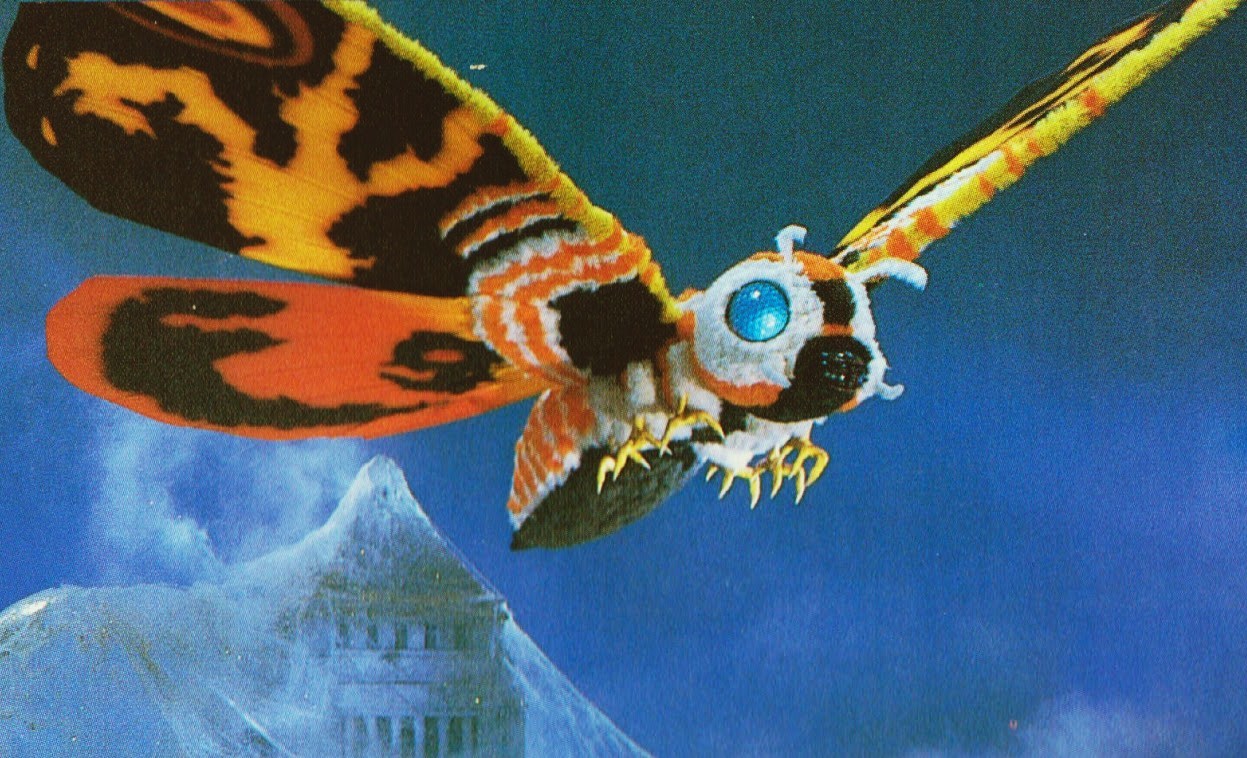
The second kaiju not played by a man in a suit, Mothra was also the sole female character, and the first that was actually good.
After shipwreck survivors are discovered in the desolate (due to atomic testing) Infant Island, an expedition led by capitalist Clark Nelson heads to the place, where they eventually come across the Shobijin fairies. The two creatures initially persuade the members of the expedition to leave the island, to keep their existence a secret and to stop further atomic testing in the area.
However, Nelson returns with another team and they kidnap the fairies, while killing the locals who try to stop them. This act wakes up Mothra, a creature resembling a giant moth, which causes catastrophe in her path to recover the Shobijin.
Ishiro Honda managed this time to find the right balance between action, drama and comedy, with Frankie Sakai, who plays a journalist in the initial expedition, giving a wonderful performance. Also memorable are the performances of the Shobijin, played by the Ito sisters, who are twins and real life pop singers. Lastly, Tsuburaya’s effects are impressive, in both the general depiction of Mothra and the various scenes of destruction.
5. King Kong vs Godzilla (Ishiro Honda, 1962)
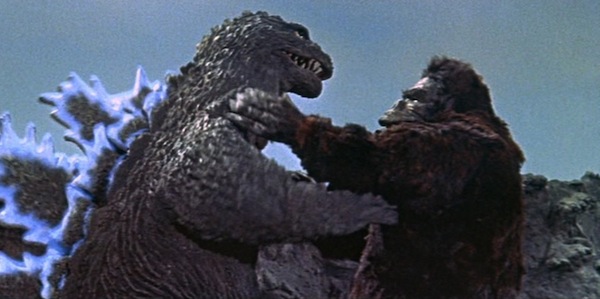
This was the first entry of the franchise that looked like a parody aimed at kids, despite the fact that Honda and Tsuburaya reprised their roles.
This time, Mr. Tako, the head of a pharmaceutical company, decides to use a monster rumored to live on Faro Island in order to increase the company’s ratings. When a giant octopus attacks the island, the monster, which is revealed to be King Kong, emerges and defeats it. Meanwhile, an American submarine collides with an iceberg, and its collapse allows Godzilla to escape, as he was trapped inside it. The duel between the two monsters seems inevitable.
The film features scenes that are actually ridiculous, such as the one where the two monsters use a boulder as if they were playing ball, and the one where Godzilla attacks King Kong with his fire ray. However, two scenes remain memorable up to this day: the one where King Kong climbs Tokyo Tower and the final battle, which is scripted like a pro-wrestling match.
Despite its obvious flaws, the film was the most successful film of the series with 12 million admissions. A US version was once more produced, again using new scenes, sound and dubbing.
6. Atragon (Ishiro honda, 1963)
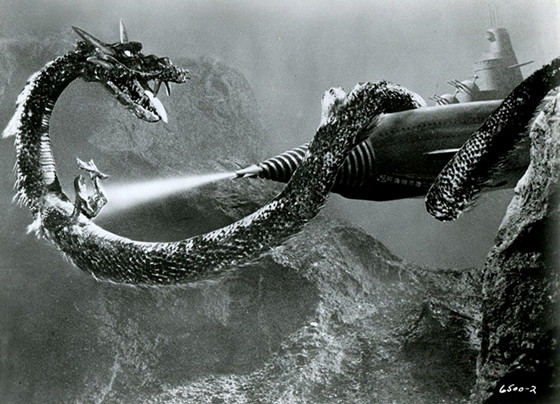
The Mu empire, an underwater civilization that was supposedly extinct, resurfaces to declare war against all nations, using huge monsters to destroy US submarines and Japanese ships and to cause earthquakes. The sole hope of humanity seems to lie on Captain Hachiro Jinguji, a Japanese nationalist who refused to surrender, and his atomic super-submarine, the Gotengo. When the Mu and their evil Queen kidnap his daughter, he decides to attack them.
The kaiju, and particularly the Manta, Gotengo’s main enemy, take a back seat in this film, since the actual protagonist is the submarine. However, the film suffers from mediocre special effects and bad character development, and subsequently, acting. There are some points of excellence, like the scene where a section of Tokyo caves in on itself, but in general, this is one of the most mediocre entries on the list.
7. Ghidorah, the Three-Headed Monster (Ishiro Honda, 1964)
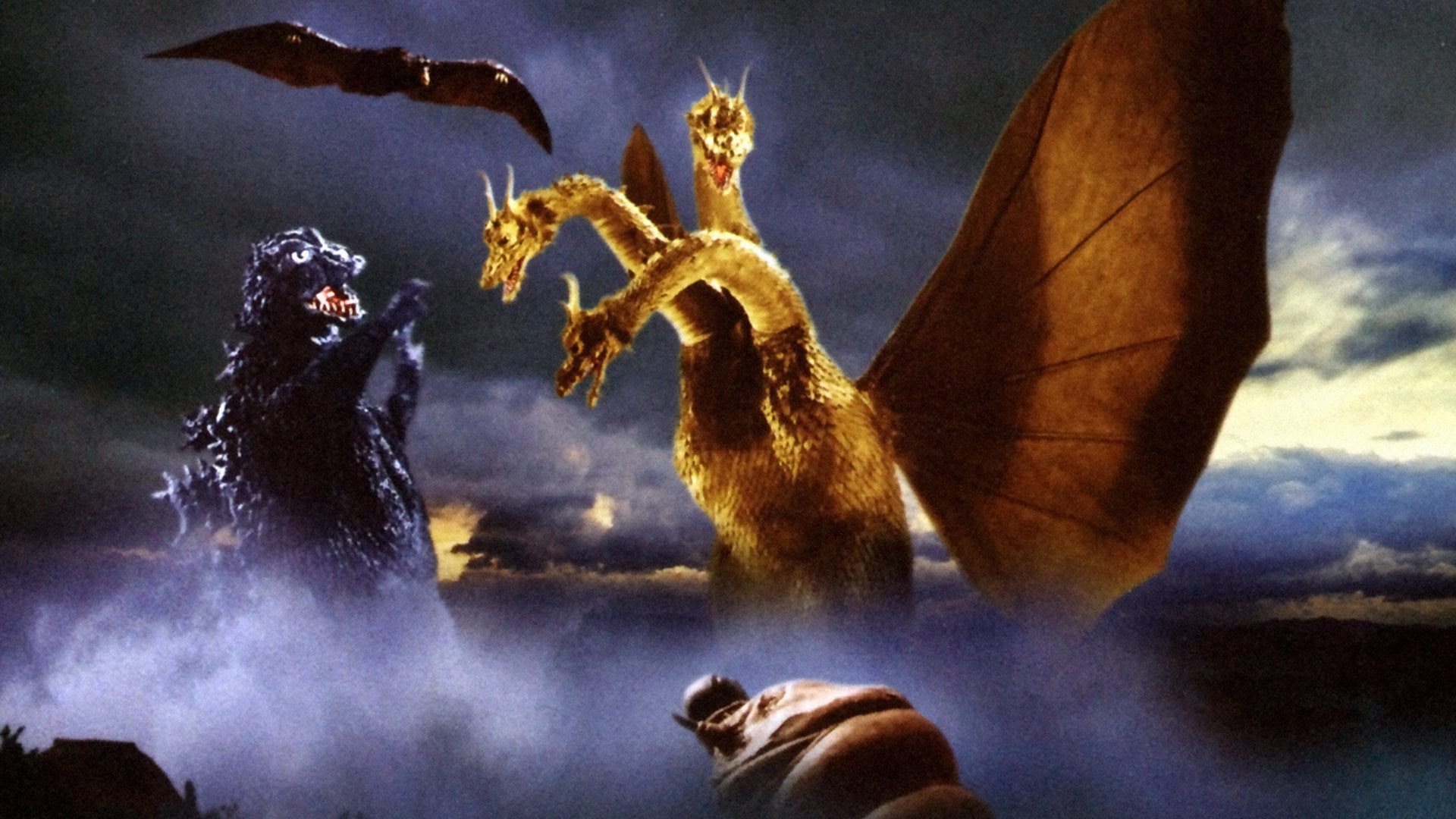
In 1964, Toho decided to shift the kaiju genre’s focus from adults to children, stripping the films of much of their depth and largely turning them into wrestling matches among actors with monster suits. This particular film, however, remains one of the best entries in the category, particularly due to its cast that featured Takashi Shimura, who played in Akira Kurosawa’s “Ikiru”, and Eiji Okada, from Hiroshi Teshigahara’s “Woman in the Dunes”.
This time the plot involves Princess Selina, who is saved from an assassination attempt by police detective Shindo. The princess prophecies disasters to come, which start to become true, as a meteorite that had previously crashed on Earth is revealed to be an egg that hatches into King Ghidorah. The monster begins razing the countryside, and the Japanese government asks the help of Mothra to help them defend the country. Mothra then proceeds to ask the help of Godzilla and Rodan.
The special effects were mediocre in this film, but the direction, writing and acting are quite good for the genre, and King Ghidorah proved to be an impressive addition to the franchise. Furthermore, the dialogue between the three monsters that proved their intelligence and the slapstick humor that permeates the film actually reinvigorated the genre, eventually making it a cult favorite.